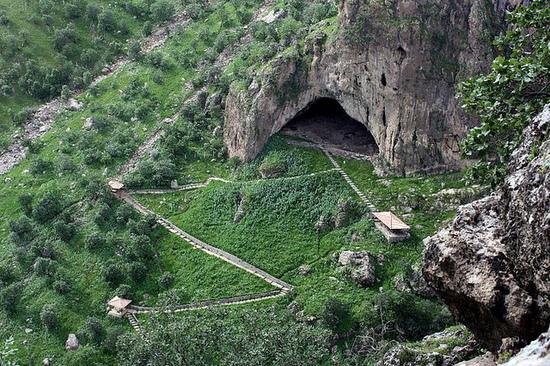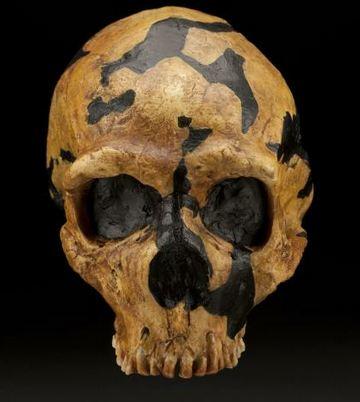 The entrance to Shanidar Cave in northern Iraq. Image courtesy of Flickr user Kurdistan Photo كوردستان
The entrance to Shanidar Cave in northern Iraq. Image courtesy of Flickr user Kurdistan Photo كوردستان
Iraq is the home of the Fertile Crescent, the Cradle of Civilization. But the country’s importance in human history goes back even further, to the time of the Neanderthals. In 1951, American archaeologist Ralph Solecki discovered Neanderthal remains in Shanidar Cave. The cave sits in the Zagros Mountains in the Kurdistan region of northern Iraq, about 250 miles north of Baghdad. From 1951 to 1960, Solecki and colleagues excavated the cave and recovered fossils belonging to 10 individuals dating to between 65,000 and 35,000 years ago. Politics prevented further archaeological work, but the Shanidar fossils still provide important insights on the Neanderthals of West Asia. Here are a few of the most intriguing finds:
Shanidar 1: Nicknamed Nandy,Shanidar 1 lived sometime between 45,000 and 35,000 years ago.

He had a hard life. A blow to the head in his youth probably blinded him in his left eye. A withered right arm and leg suggest the head injury probably also caused brain damage that paralyzed the right side of Nandy’s body. He also fractured his foot at some point. Yet his bones all show signs of healing, and Nandy lived to be a senior citizen by Neanderthal standards, dying sometime between the ages of 35 and 45. The find revealed that Neanderthals must have taken care of their sick and wounded.
Shanidar 3: Also an adult male, Shanidar 3 had plenty of problems of his own. In addition to suffering from arthritis, the Neanderthal seems to have been violently attacked. A tiny groove on one of his ribs indicates he was probably struck in the chest. A 2009 analysis (PDF) points to a modern human, Homo sapiens, as the assailant. Based on experimental stabbings of pig carcasses, a team led by Steven Churchill of Duke University determined that the most likely weapon was some kind of dart, shot from long range. Because modern humans are the only hominids known to have made projectile weapons, the researchers blamed our species for the wound. The wound may have harmed Shandiar 3′s lungs, but it’s possible he survived the attack. A callous that formed over the groove shows that he must have lived at least a few week after the incident. And modern people with similar injuries can survive even with little medical care.
Today, you can examine Shanidar 3 for yourself at Smithsonian’s National Museum of Natural History, where the fossil is on display.
Shanidar 4: Yet another adult male, Shanidar 4 was found on his side curled up in the fetal position. An analysis of the ancient pollen found in association with the fossilized skeleton revealed bright flowers had been brought into the cave. Solecki interpreted the pollen studies as evidence that Neanderthals buried their dead and adorned the graves with flowers, suggesting Neanderthals had rituals. Skeptical anthropologists say natural forces—perhaps burrowing rodents—introduced the pretty flora into the cave. Although Neanderthals might not have decorated the graves, they were responsible for burying at least some of the individuals in Shanidar.